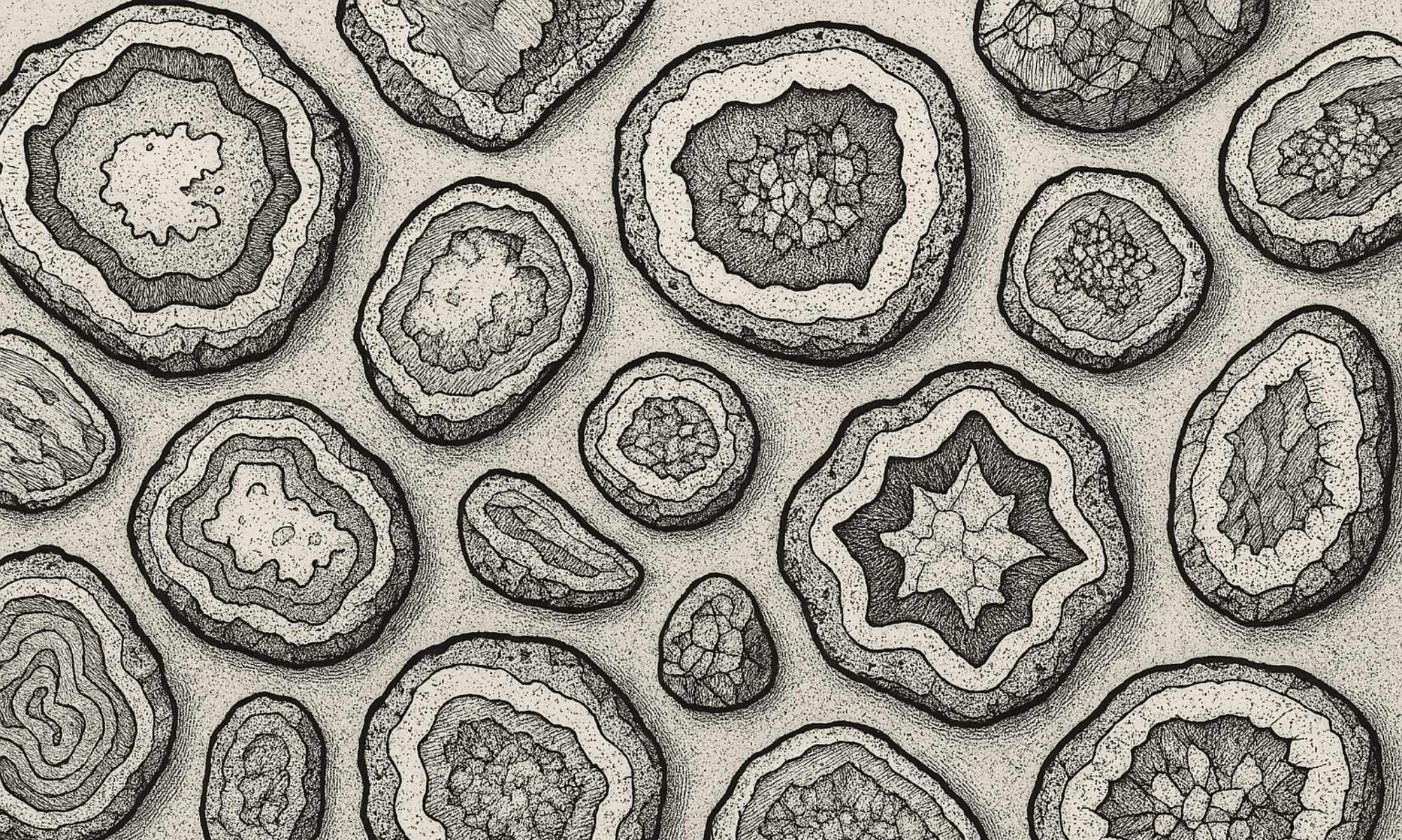Thundereggs Beyond the Northwest
While Oregon and Washington are world-famous for their thunderegg beds, these fascinating geological nodules occur in several other parts of the United States and even around the world. Formed in volcanic ash layers millions of years ago, thundereggs are a product of rhyolitic flows and silica-rich fluids—conditions that have occurred far beyond the Pacific Northwest.
Southwest United States
New Mexico is home to one of the most recognizable thunderegg localities: the Nodule Bed near Deming. These thundereggs often contain banded agate, quartz, or even geode-like crystal pockets, with a matrix that can range from chalky white to dark red. Nearby Labrador Canyon and Hardscrabble Road also produce colorful, well-formed specimens. Arizona and Nevada host less common but still significant beds, sometimes containing jasper or fire agate cores within rhyolitic nodule forms.
Western and Mountain States
In Utah, thundereggs have been found in areas like Dugway and the Thomas Range, often featuring muted agate interiors and sometimes opal. Colorado and Idaho also have lesser-known thunderegg sites, typically found in remote, high-elevation volcanic regions. These specimens can be subtle in color but are valued for their clarity and form.
Eastern United States
Thundereggs are far rarer east of the Rockies, but isolated finds have been reported in Texas, Arkansas, and parts of North Carolina. These are typically associated with ancient volcanic events or redeposited material and may not be as well-formed or abundant as those from the western U.S.
International Finds
Outside the U.S., some of the most spectacular thundereggs come from Germany’s Saxony region, Mexico, Ethiopia, India, and Australia. Each region brings its own geological signature to the thundereggs it produces—whether it’s the fine plume patterns of Hungarian specimens or the deep crystal-filled geodes of Madagascar.
Wherever they form, thundereggs are a testament to the geologic forces that shape our planet. For collectors and rockhounds, exploring these beds beyond Oregon and Washington opens up a world of diverse colors, patterns, and histories—each one locked inside a stone.
